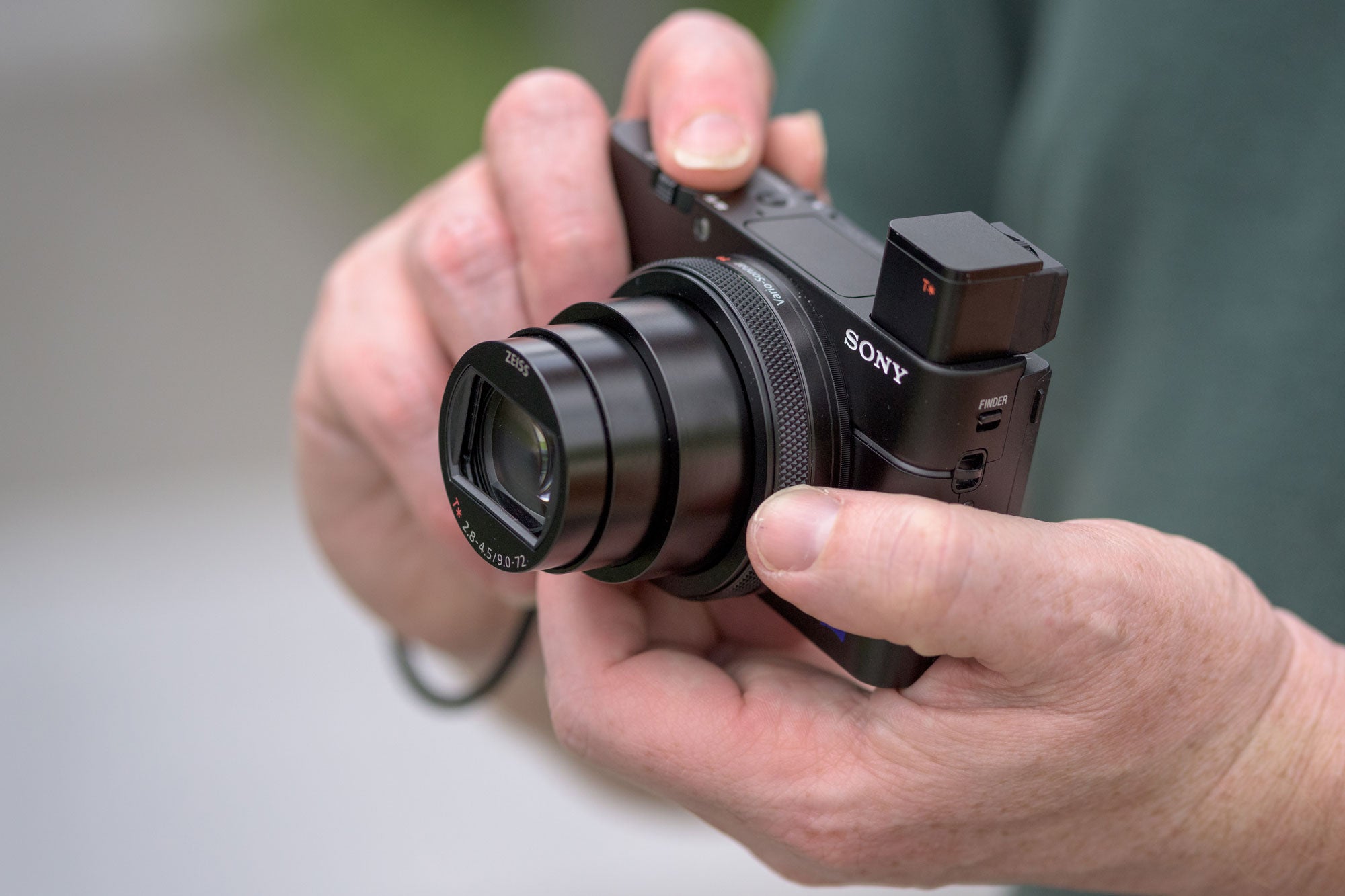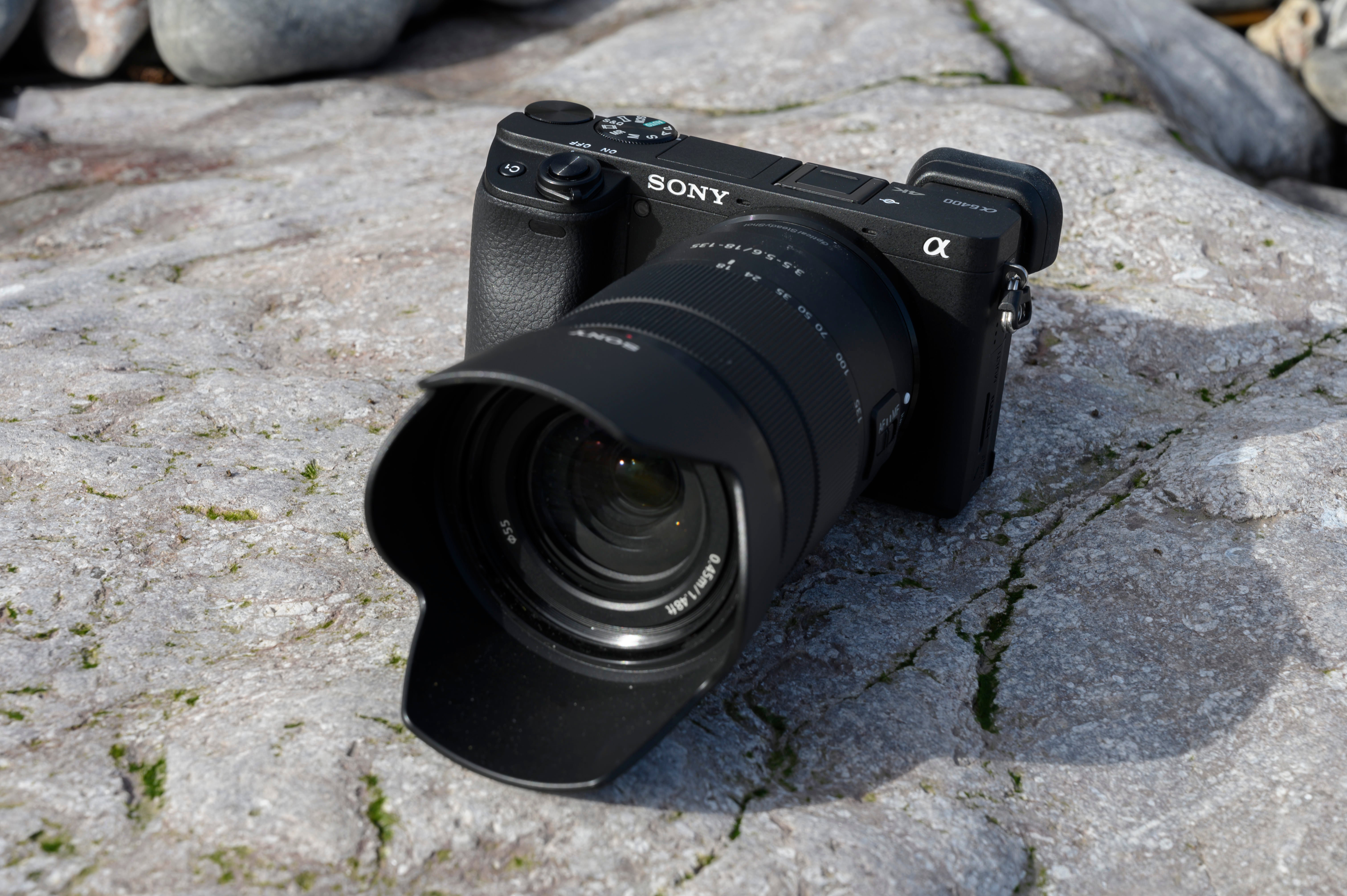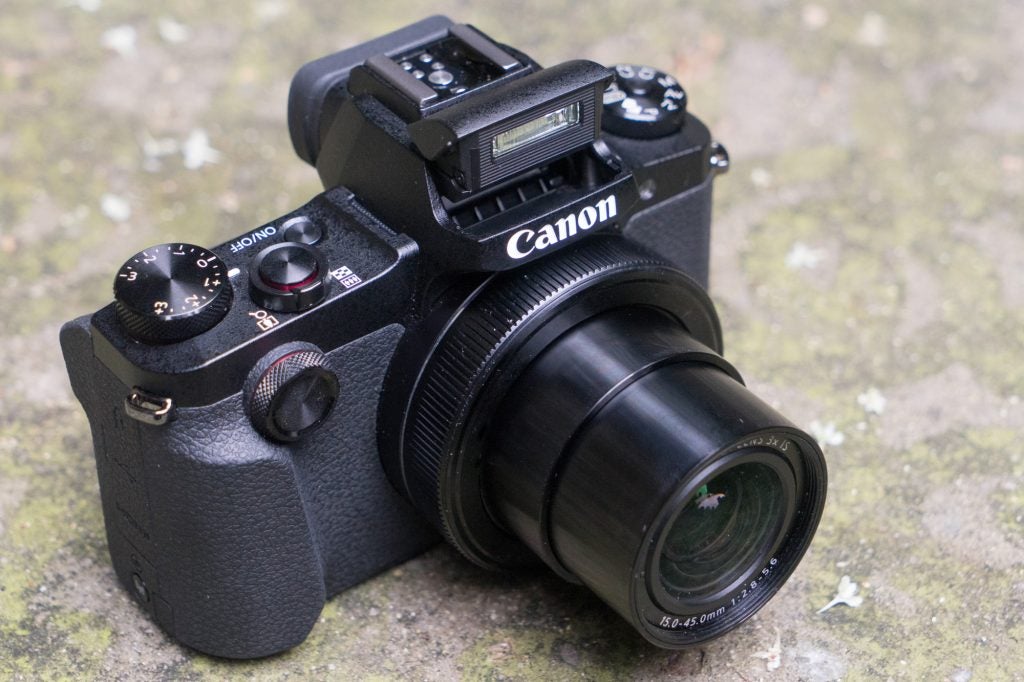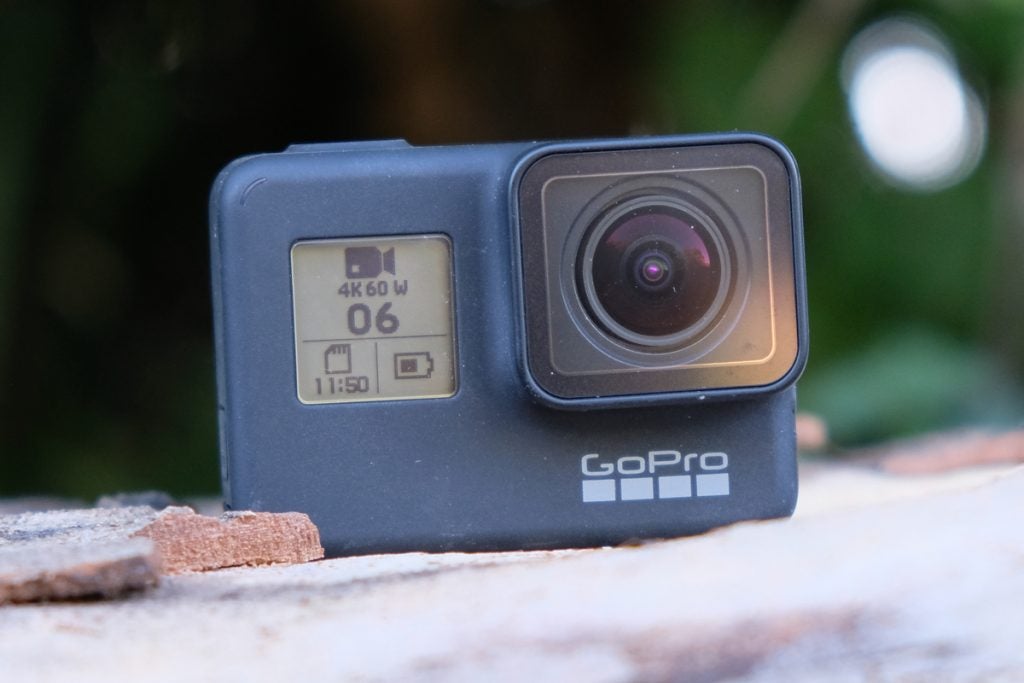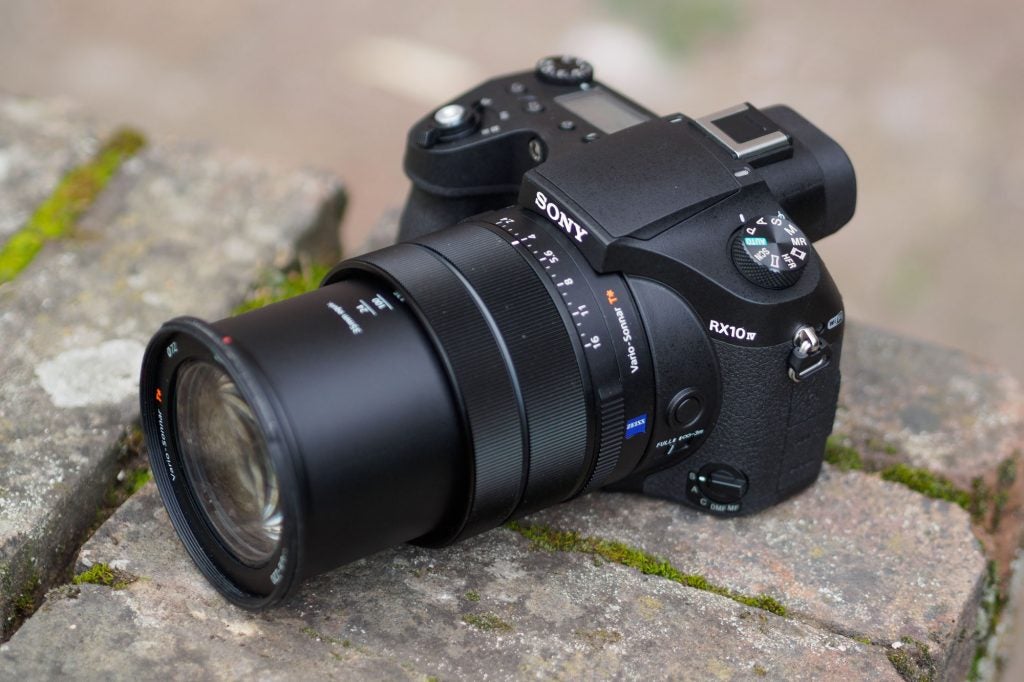Best Travel Camera 2020: The 12 best holiday cameras you can buy
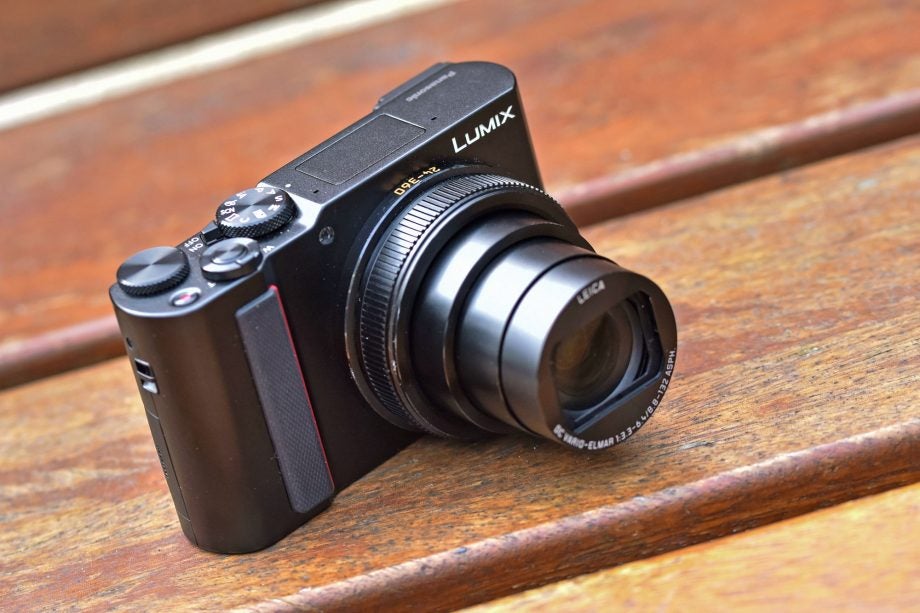
Best Travel Camera: we test and compare the latest travel cameras from Canon, Panasonic, Sony, DJI, GoPro and more.
One of the best times to invest in a new camera is just before you head off on a big trip abroad.
Whether you’re looking for a pocketable smartphone upgrade or a way to upgrade your travel photography, there are lots of cameras that are built specifically for life on the road.
Right now, the best advanced travel camera you can buy is the Fujifilm X-T30. If you’re looking for a compact travel zoom for under £400, though, then the Canon Powershot SX740 HS (or perhaps even its predecessor, the SX730 HS) is your best bet.
We test for colour, since different sensor and camera image processors can interpret colour differently, as well as shifting at different ISO sensitivities. We then get down to the nitty-gritty of resolution, with our lab tests showing us exactly how much detail each camera’s sensor can resolve.
Even though cameras can share identical pixel counts, some perform better than others. Then we look at image noise, since different cameras can produce cleaner images at higher ISOs than others.
Finally, we get out and shoot with every camera in real-world conditions, just as you will, to find out how it will perform in day-to-day use. All results are analysed by the very best industry software, making our reviews the most authoritative of any you’ll read.
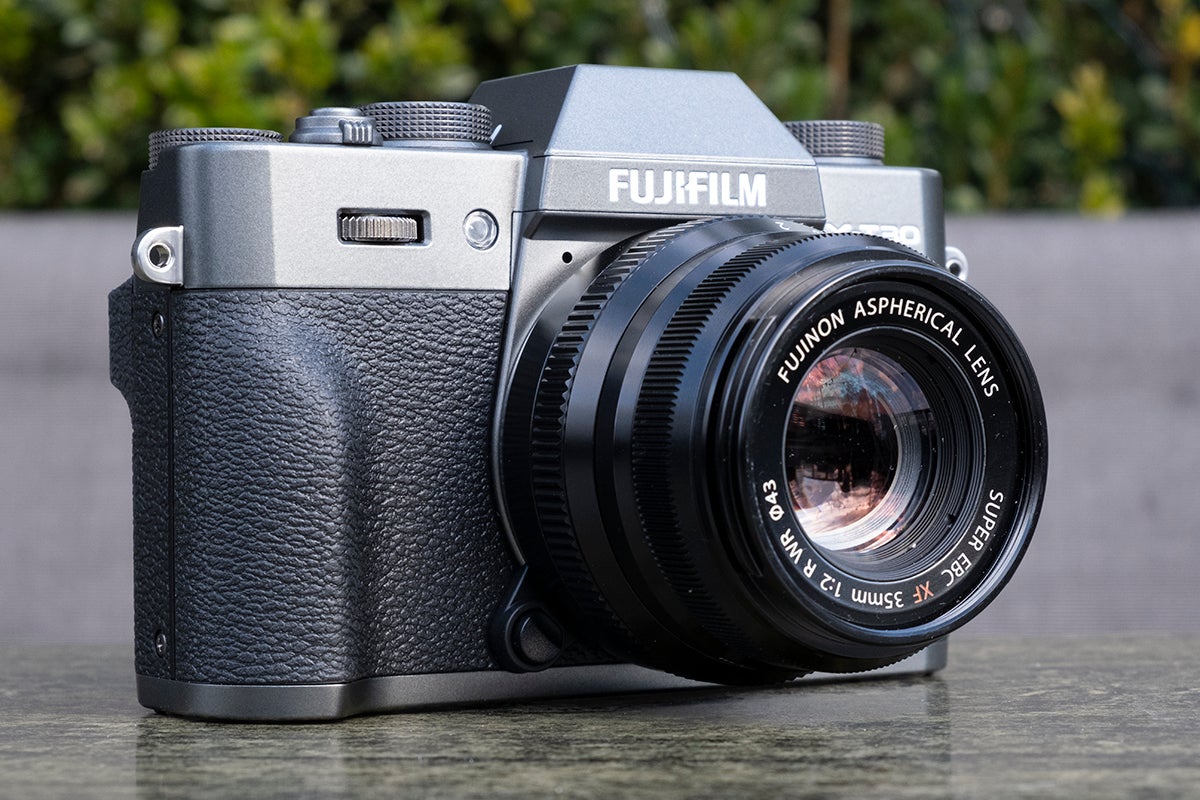
1. Fujifilm X-T30
Compact form and great lenses make this a brilliant travel camera
Latest live deals
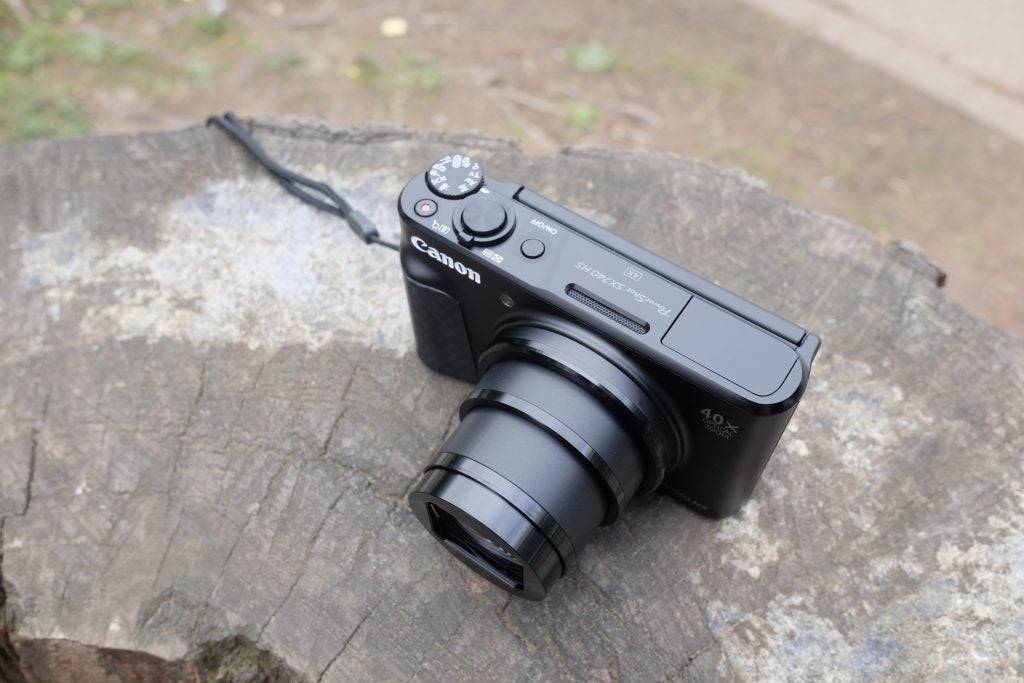
2. Canon Powershot SX740 HS
If it’s zoom you need, it’s hard to look beyond this all-seeing travel cam
Pros:
- 40x optical zoom
- Largely accurate autofocus
- Good photo quality in daytime
- Shoots 4K video at 30fps
Cons:
- Small sensor restricts low light performance
- No option to shoot in Raw
- Screen isn’t touch-sensitive
Smartphones have caught up with compact cameras in lots of ways, but one thing they can’t offer is 40x optical zoom – and that’s what makes the Canon SX740 such a fine travel camera.
Not that it’s just a basic, pocket-friendly camera with a big zoom clamped on the front. The SX740 is packed with lots of handy features, including five-axis image stabilisation, 4K video recording and the ability to fire off stills at 10fps.
Its performance largely matches this features list too, with generally speedy autofocus and vibrant stills, at least when you’re shooting in good light. The SX740’s one major downside is that its 1/2.3-inch CMOS sensor struggles a little in lower light, with a slight of lack of detail and a little smudginess in places.
Unless you’re willing to splash out a little more on a compact with a one-inch sensor, like the Panasonic TZ200 or Sony RX100 VI below, that’s to be expected of a compact camera at this level, and the SX740 otherwise does more than enough to justify its price tag and its status as one of the most versatile travel compacts you can buy.
Latest live deals
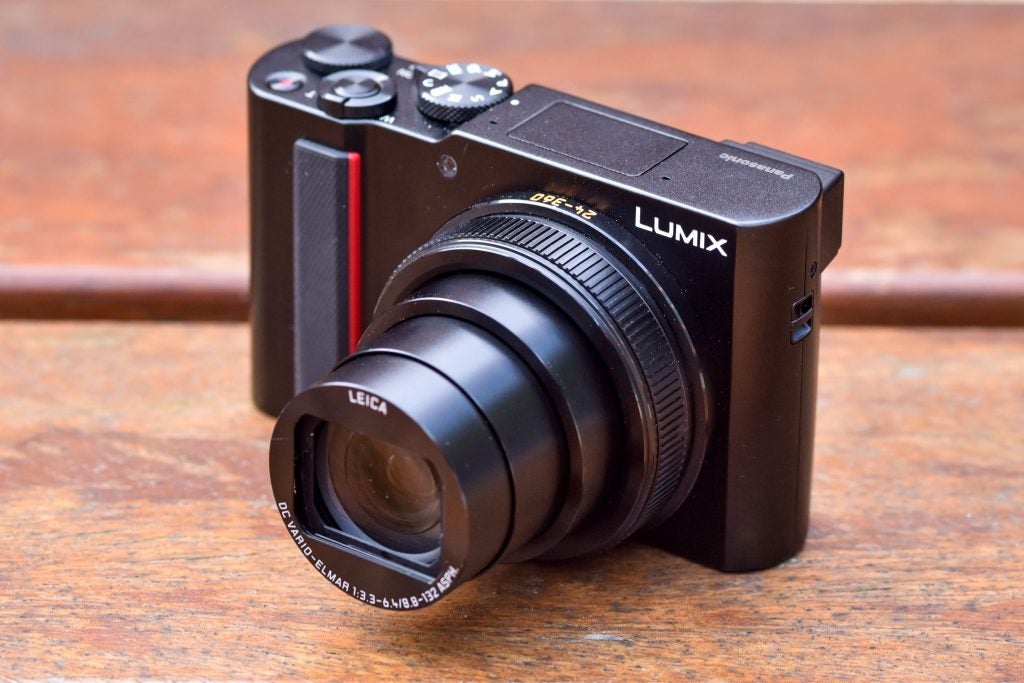
3. Panasonic Lumix TZ200
A fine, premium all-rounder for your holiday carry-on
Pros:
- Stellar zoom range
- Respectable image quality
- Very usable electronic viewfinder
- Good grip in the hand
- Effective image stabilisation
Cons:
- Average JPEG quality
- Rear LCD doesn’t tilt
- Controls don’t suit viewfinder shooting
- Slow maximum-aperture zoom is soft at telephoto
Panasonic essentially invented the ‘big zoom, small body’ travel camera – and the TZ200 takes things to another level. Following 2016’s game-changing TZ100, this 2018 update adds two major improvements: a much better electronic viewfinder and a 15x, 24-360mm equivalent zoom.
That lens is the headline feature. It’s longer than anything else you’ll find on a compact with a 1-inch sensor, providing fantastic flexibility when you’re shooting on the road. The compromise is a lower maximum aperture, down to f/3.3-6.4. Combined with a minimum aperture at all focal lengths of f/8, you get limited versatility at the far ranges of the zoom. Images are less detailed at the long end, too, and in low light you’ll have to boost ISO sooner.
Still, optical image stabilisation does well to tackle blur, and the 20.1-megapixel sensor delivers best-in-class image quality across almost all shooting conditions. The new viewfinder helps, too: it’s larger than before, with a higher 2.33m-dot resolution, and the LCD’s refresh rate makes flicker near-invisible. As a result, it’s a pleasure to shoot with.
In the hand, the TZ200 is almost identical to the TZ100, but for extra rubber on the grip, which makes it far less slippery than its predecessor. That said, the layout and small size of certain buttons is unhelpful – particularly when using the viewfinder – while the zoom control can be quite jumpy.
A true all-rounder, Panasonic’s small-aperture superzoom isn’t flawless, then, but for sheer versatility it’s hard to beat. Equipped with a raft of shooting modes and tools – including an intervalometer for time-lapse shooting and new Bluetooth functionality for remote smartphone control – there’s little the TZ200 can’t do. Add in 4K video at 30fps and respectable battery performance and you’ve got a pocket-friendly powerhouse.
Latest live deals
4. Sony Cyber-shot RX100 VI
One of the priciest compacts around, but also one of the best
Pros:
- Small and lightweight
- Tilting screen
- Useful electronic viewfinder
- Large sensor & fast frame rate
- 4K video recording
Cons:
- Very expensive
- Buttons are fiddly
Sony’s latest RX100 model emerged in July 2018, and (unsurprisingly), the Sony RX100 VI is the best one yet. For the first time ever, you’ve got a fairly long zoom, with 24-200mm (8x optical) on offer – putting it close to the TZ200.
Something has to be sacrificed to get that extra zoom length though, and in this case it’s at the expense of super wide aperture. The previous model (RX100 V) offered f/1.8-f/2.8, but the Mark VI narrows that down to f/2.8-4.5. Now, if we’re talking about your average travel shot, the zoom is more important, but if you find yourself often shooting in dark situations, you might miss that wider opening.
As always, this is by no means a cheap camera. It’s not even in the “reasonable” category to be honest – it’ll set you back £1200. But you do get an astonishing amount of tech in a teeny tiny body, and that’s arguably worth paying for.
Body wise, buttons are few but useful – if a little on the small side – and for the first time ever, Sony has put touch-sensitivity on the RX100’s screen.It’s still not perfect, but at least you can give a little tap to set the AF point, which is always handy.
As with the previous generation of the camera, the autofocus is extremely fast and it also offers ridiculously high-speed continuous shooting at 24fps. That makes it useful for capturing fast moving subjects, which on your travels could include all sorts of exciting things.
The Sony sensor delivers lovely vibrant images, with bags of detail and a good degree of exposure control. If it’s prohibitively expensive, take a look at older RX100 models to save a bit of cash – particularly if you crave the wider aperture options.
Latest live deals
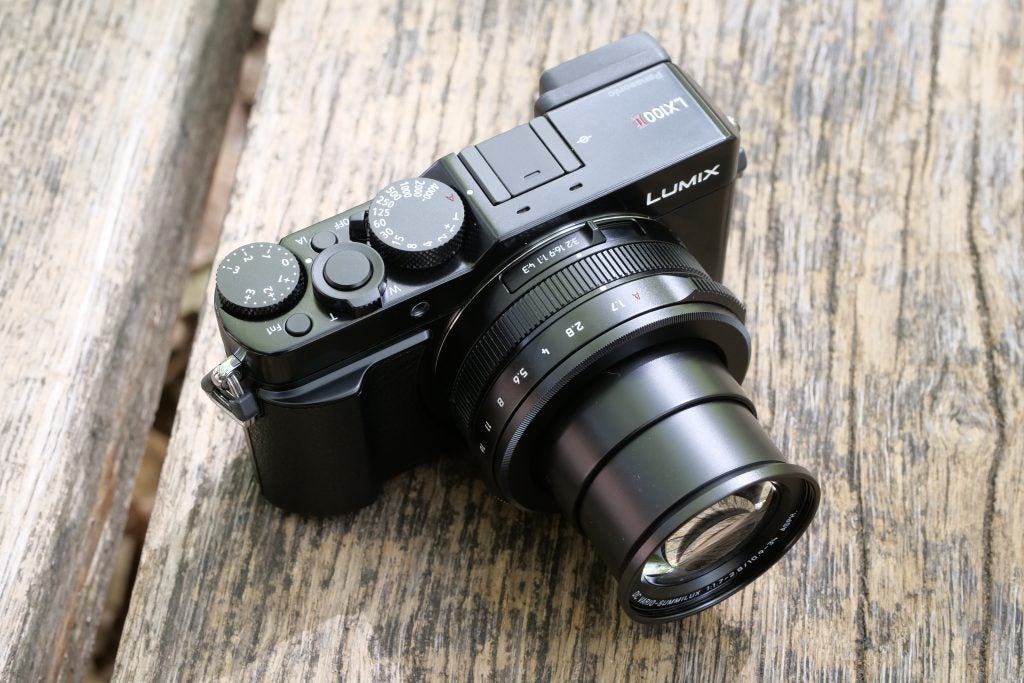
5. Panasonic Lumix LX100 II
Going on a city break? This is one of the best street photography snappers around
Pros:
- Large, Four Thirds sensor
- Small and light
- Tactile controls
Cons:
- No tilting screen
- Fairly small upgrade from predecessor
If you’re looking for a top-notch camera to take on your travels, that doesn’t see too much of a compromise in image quality – the LX100 II is an excellent choice.
Thanks to its Four Thirds sensor, you’re getting exactly the same imaging power that you would in one of Panasonic’s compact system cameras, but you can fit it in your jacket pocket (or even your jeans if wear fairly loose fitting ones).
The LX100 II came to the market some four years after the original, but despite having to wait that long, the upgrades are a little bit incremental. There’s a better sensor, and an improved EVF, plus the screen is now touch-sensitive.
A big disappointment is not to have a tilting screen, which can be useful for composing from awkward angles, but is less likely to be bothersome to somebody using it primarily as holiday camera. Having an EVF to switch to when bright sun prohibits the use of the screen is also handy too.
Latest live deals
6. Sony A6400
A small, powerful all-rounder that’ll take your travel snaps to the next level
Pros:
Superb autofocus
Good range of lenses
Front-facing screen handy for vlogging
Impressive dynamic range
Cons:
No in-built image stabilisation
Fiddly handling
If you’re looking for a mid-range mirrorless camera to take on your travels, there’s very little to choose between the excellent Sony A6400 and Fujifilm X-T30 (see above). But if you like shooting videos to camera or want the best autofocus in the business, then the Sony A6400 might just be your perfect holiday ally.
Can’t quite stretch your budget to afford the A6400? There is definitely still a case for considering the Sony A6000, which is available at half the price. But while that older A-series model is good value, it can’t match the A6400’s autofocus or video performance.
Like the Fujifilm X-T30, the A6400 is a fantastic all-rounder thanks to its class-leading autofocus (which now includes Animal Eye AF for pet or safari snapping) and burst shooting speeds, which reach an impressive 11fps with the mechanical shutter.
The only real downside to the A6400 is its occasionally awkward handling, with some fiddly buttons and an under-cooked touchscreen experience. And the fact that the Fujifilm X-T30 is the slightly more impressive all-rounder.
But if you prefer its more modern design and its 180-degree flipping screen, then the Sony A6400 is a great choice for both travel and general day-to-day photography.
Latest live deals
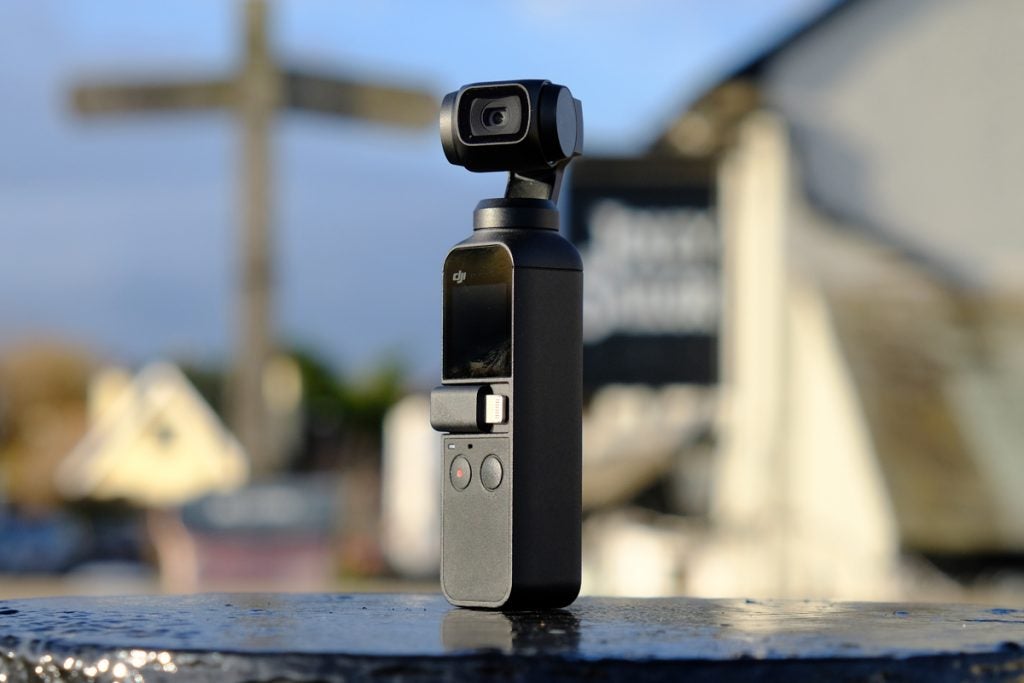
7. DJI Osmo Pocket
For cinematic holiday videos, this gimbal-stabilised pocket camera is hard to beat
Pros:
- Shoots smooth, gimbal-stabilised video
- Incredibly small
- Auto-tracks subjects and faces
- App gives you lots of manual controls
Cons:
- Average audio quality
- Needs accessories to unlock its full potential
- Not waterproof without an optional case
If you’re looking to mostly shoot videos, timelapses and clips to camera on your travels, then it’s hard to beat DJI’s unique Pocket camera.
It’s the world’s smallest 4K camera with a three-axis gimbal, which means it shoots super-smooth video in all lighting conditions (even gloomy lighting, which can trouble cameras that mostly rely on electronic stabilisation).
On its own, the DJI Osmo Pocket makes a great walkaround travel camera for video and 12-megapixel stills, but plug your Android or iPhone smartphone into its side and you get loads more effects like automatic subject tracking and motion timelapses.
The Pocket’s 1/2.3in sensor (in the ballpark of most compacts and flagship smartphones) means it won’t trouble premium compacts like the Sony RX100 VI or Panasonic TZ200 for stills quality, but it produces the best video quality from a camera of this size. Which is to say, one that’s about the size of a Mars bar.
The combination of its gimbal and app mean that even novices can shoot cinematic panning shots, while those with more experience will be happy to find full manual controls and histograms in the settings.
You might need to add one or two of the Pocket’s optional accessories, such as the 3.5mm microphone adaptor, to unlock its full potential, but on its own it’s still a fantastic holiday companion and a nice upgrade from your smartphone’s video capabilities.
Latest live deals
8. Panasonic G90
A fine travel camera with weatherproofing and built-in stabilisation
Pros:
- Weatherproof design
- Versatile screen is good for vlogging
- Impressive photo and video quality
- Unlimited 4K video recording
Cons:
- Larger than its Sony and Fujifilm rivals
- Smaller sensor than similarly priced cameras
Looking for an interchangeable lens travel camera with both weatherproofing and in-built image stabilisation? The Panasonic G90 is the best mid-range option with those features right now.
Its 20.3-megapixel Four Thirds sensor is smaller than the APS-C chips in the Sony A6400 and Fujifilm X-T30, and it is a bulkier camera overall. But that does mean it has room for that built-in IS, which you won’t find in either of its rivals.
The Panasonic G90’s autofocus isn’t quite as sharp as those two cameras, but it is fast to get a lock in most situations, including when tracking moving subjects. Also pretty rapid is its burst shooting speed, which hits 9fps at full resolution and 30fps in 4K Photo mode resolution (which is about eight megapixels).
In other words, it’s a fine all-rounder for pretty much any situation, except challenging low light scenes, where its smaller sensor is pushed to the limits (even if built-in IS helps you preserve image quality). Still, vloggers will really appreciate its side-flipping screen, while the G90’s 4K video quality is really strong and aided by the bonus of unlimited 4K video recording.
Right now, there’s an argument that the larger and older Panasonic G9 actually offers better value, thanks to its superior video recording and two card slots. But for hobbyists and travellers, the G90 is the sweet spot.
Latest live deals
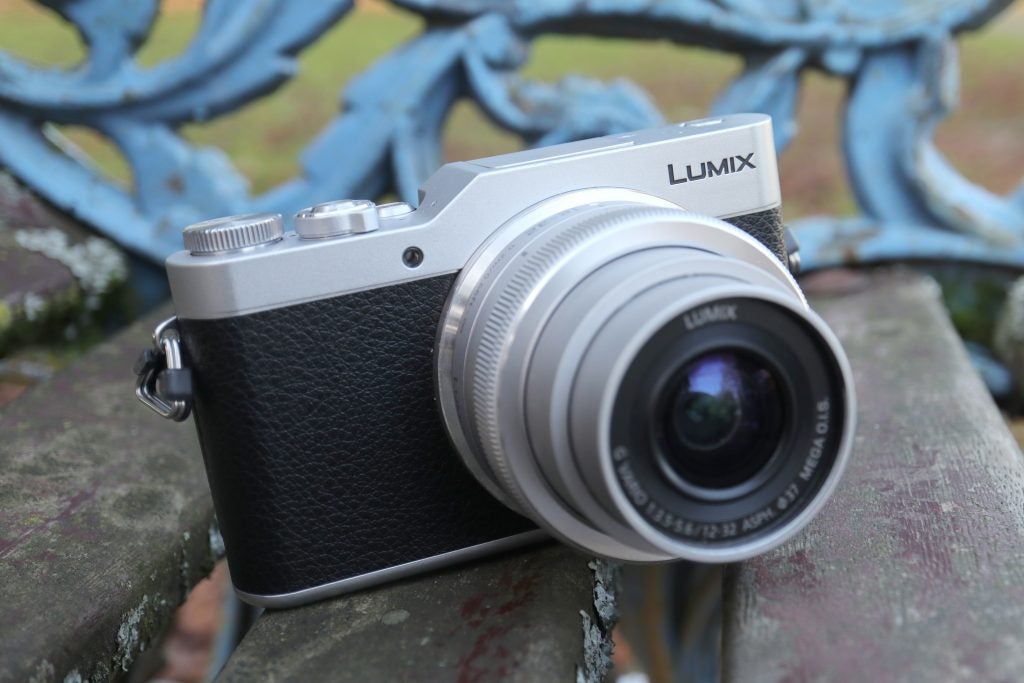
9. Panasonic Lumix GX800
One of the best value compact system cameras you can buy
Pros:
- Small and easy to use
- Capable of 4K Video and 4K Photo
- Cheapest Panasonic CSC around
Cons:
- No viewfinder
Panasonic’s cheapest compact system camera might be simpler than its GX8 and GX80 siblings, but it’s unbeatable as an entry-level travel camera.
Closer in size to a premium compact, it’s the manufacturer’s smallest CSC and, with the 12-32mm kit lens fully retracted, it will happily slip into a large pocket. Despite that, it benefits from a 16-megapixel Micro Four Thirds sensor, which does without an optical low-pass filter in favour of greater detail in shots.
Although it sits at the bottom of the Panasonic lineup, you get two killer features: 4K Photo, which lets you pull stills out of 4K video shot at 30fps, and Post Focus. The former is useful for action photography, while the latter’s option to retrospectively change the point of focus is great if you’re into macro.
You won’t find too many controls on the body, which speaks of the model’s beginner status, but what’s there is grouped well and makes for easy one-handed shooting. You’ll need to look elsewhere if you want a viewfinder, though. However, in its place is a touch-sensitive, flip-up LCD that’s responsive and intuitive, making it an ideal option for those stepping up from smartphones.
Fitted with the 12-32mm kit lens, the camera starts up quickly and is largely fast and accurate. Lock-on can be a challenge in low light, but it’s otherwise reliable and tracking is reasonable, provided you’re following something predictable. Overall image quality is excellent, with warm colours and rich detail. The highest ISO levels are best avoided, but in most conditions you’ll get well-balanced results – and it’s a similar story with 4K footage.
If you’re looking for budget performance that’s a step up from your smartphone or compact, the GX800 is a very capable option. And if that viewfinder is a deal-breaker, Panasonic’s GX80 isn’t too much more expensive.
Latest live deals
10. Canon G1X Mark III
This pro-friendly compact is ideal for anyone looking for a mini version of their DSLR
Pros:
- Class-leading image quality
- Excellent control layout
- Robust construction
Cons:
- Lens offers little creativity
- Relatively poor battery life
- No 4K video recording
Styled like a mini-DSLR, the G1X Mark III is the ideal travel camera for those who want a more portable version of their full-size camera. With its pro-friendly controls and built-in electronic viewfinder, it’s a premium zoom camera for enthusiasts rather than beginners.
A 24-megapixel APS-C sensor is hidden in its compact shell, delivering image quality to match some DSLRs, while Dual Pixel CMOS AF technology means on-chip phase detection for rapid and accurate autofocus. Canon’s Digic 7 processor is there, too, serving up processing tricks that tackle difficult lighting conditions with aplomb.
There are limitations, though. At £1149, you’re paying a serious premium for that compact performance, while the built-in 24-72mm equivalent lens isn’t perfect, either. The range is usable enough, but its f/2.8-5.6 maximum aperture is relatively limited compared to contemporaries, restricting background blur at the business end of the zoom.
Battery is also a blight on all-day shooting, with stamina that’s good for just 200 shots on a single charge, while certain controls are laid out in an awkward way.
All of that being said, the G1X has some real highlights. One of them is the electronic viewfinder, which sits centrally above the fantastic flip-out touchscreen. A 2.36m-dot OLED unit, it’s bright, accurate and clear, and feels like the best way to shoot with the Mark III.
Canon has also made it very easy to connect the G1X to other devices. Besides Dynamic NFC and Wi-Fi, always-on Bluetooth is a real stand-out feature, letting you use your phone as a wireless remote and to fire up the Wi-Fi for advanced remote shooting.
Flaws and all, this is a remarkable camera. Squeezing an APS-C sensor and zoom lens into such a small body is no mean feat, and paired with quick autofocus and class-leading image quality, it’s up there with the best.
Latest live deals
11. GoPro Hero 7 Black
Still the ideal rugged, waterproof camera for adventure holidays
Pros:
- Fantastic image stabilisation
- Waterproof without a case
- Livestreaming available
- Great video, audio and stills quality
Cons:
- Can get hot recording 4K
- Occasionally sluggish
- Relatively expensive
If it doesn’t count as a holiday if it didn’t include some kind of action or adventure element, then you may want to pick up a camera to document all of your travels with.
GoPro has become the go-to name for action cameras, and its latest incarnation, the GoPro Hero 7, shows us exactly why the company dominates the market so heavily.
Its headline features include 4K/60fps video with electronic images stabilisation, waterproofing without need for a case, plus the ability to livestream. We’re not talking about a massive overhaul from the GoPro Hero 6, but pricing is sensible enough to tempt you towards the newer model.
Latest live deals
12. Sony Cyber-shot RX10 IV
A fantastic bridge camera all-rounder with DSLR-beating speed
Pros:
- Huge zoom range
- Fast, accurate autofocus
- Excellent image quality
Cons:
- Screen only tilts up or down
- Lacks some expected features
- Bluetooth used for geo-tagging only
Anything that promises all-in-one performance has a lot to prove, but the original RX10 showed that adding a larger sensor to a bridge camera could achieve peerless versatility. Five years later, its fourth generation raised the bar to staggering heights.
Sony has overhauled the internals, adding a 20.1-megapixel stacked CMOS sensor and Bionz X processor. In consequence, it’s blisteringly fast – to a degree that eclipses most DSLRs. It will shoot at 24fps with continuous autofocus, while its silent electronic shutter can deliver speeds of 1/32,000sec. That chip even has enough power to buffer 110 RAW files.
What’s more, there’s on-chip phase detection which, combined with 315 focus points, allows the camera to group points around a moving subject for supreme accuracy.
The RX10 IV’s lens has an equivalent range of 24-600mm, offering incredible versatility without switching lenses. While the maximum aperture is f.2.4-4, things do change quickly as you zoom, with f/4 your lot beyond 100mm. Still, with the ability to focus just 3cm from the front element at wide angle, it’s a very flexible setup.
Enthusiasts might rightly bemoan the lack of several features, including in-camera RAW conversion, an intervalometer and a greater variety of aspect ratios, while Bluetooth LE is limited to geo-tagging only – but the breadth of the RX10 IV’s shooting capabilities is hard to fault.
Video options are similarly comprehensive, with 4K at 25fps, along with manual exposure control, the option to re-focus while recording, and the ability to pull 8-megapixel stills from 4K footage. There’s even a limited but impressive High Frame Rate mode that can capture at up to 1000fps.
In short, the RX10 IV really is an all-in-one answer to the travel camera conundrum. It will tackle almost any situation and subject and, short of the usual 1-inch sensor noise at higher ISOs, performance is almost flawless.
Latest live deals
Best travel cameras buying guide – six things to look out for
1) Viewfinders
Even the best screens can be hard to see in direct sunlight. If you’re heading somewhere sunny, it’s worth considering a camera with a viewfinder. Less common on budget models, viewfinders are protected from the light, so offer an unhindered shooting experience in which the image and framing can be seen clearly.
DSLR cameras often carry optical viewfinders, which give the eye an unaltered, natural image, while many premium compacts and CSCs use electronic viewfinders. These relay a bright, clear preview to a small, high-resolution display. Better EVFs can give a truer impression of what the camera will capture and are very useful at night, but less-effective variants can suffer from flickering and lag.
2) Weather-proofing
Unless you’re a fair-weather traveller, it makes sense to consider weather-proofing when buying a camera. Fully rugged cameras are designed to withstand knocks, drops and even immersion in water for extended periods, so you’ll want one of these if you’re going on an adventure holiday.
Most standard cameras are less extreme, but many offer a degree of weather protection. Some of the premium compacts in this list are dust- and drip-proof, which should give you peace of mind when shooting in the rain, while it’s also possible to find weather-sealed DSLRs that rely on rubber housings and seals to keep moisture out – although lenses also have to be weather-sealed for full protection.
3) Connectivity
Many cameras in this list ship with Wi-Fi built in. Use it to connect wirelessly to your smartphone or tablet and you’ll be able to transfer your latest holiday shots across for editing and sharing on the go, without a PC or cable in sight.
Certain models also offer NFC, which similarly permits contactless file transfers to NFC-enabled phones. Bluetooth, on the other hand, is generally used for controlling your camera from your phone, but not all of our picks implement it in the same way. Choose a model with a partner app and you’ll likely be able to trigger the shutter from afar for the perfect postcard selfie.
4) Dimensions vs battery life
Size is everything when it comes to travel cameras, and not all are created equal. If you’re travelling light and rucksack space is at a premium, a compact is your best bet, since these tend to be smaller and lighter, yet still versatile enough for most shooting conditions. DSLRs, on the other hand, are weightier and any extra lenses will add bulk to your bag – although image quality is the big selling point.
Compact system cameras sit somewhere in the middle, offering decent performance and the option of multiple lenses, with less heft than DSLR equipment. The flip-side is that bigger cameras tend to offer better battery life. Compacts frequently sacrifice longevity to achieve their diminutive proportions, so you’ll usually need a spare battery for all-day shooting.
5) Image stabilisation
Travel photography often involves shooting on the move, which is where image stabilisation (or IS) comes in handy. This technology reduces the effect of hand-shake or camera movement on photos.
Different manufacturers give it different names but there are essentially two types: sensor-shift, where the sensor moves to compensate for shake; and lens-shift, where the lens adjusts instead. Whichever system is used, the result is sharper shots even when the camera isn’t kept still. This is also a boon when you’re shooting at slower shutter speeds or long zoom lengths, both of which would otherwise magnify any movements.
6) 4K video
While most cameras are capable of shooting video in 720p or 1080p, only some can do so in 4K. Whether you need the added resolution depends on how you watch your videos. It’s worth bearing in mind that 4K footage takes up a lot more storage space than HD, too.
If you want to shoot video as you travel, there are several choices in this list that can deliver both high-quality stills and smooth 4K footage at 30fps. Some also give you the option of picking out individual video frames as still shots, which is useful for capturing fast action.


